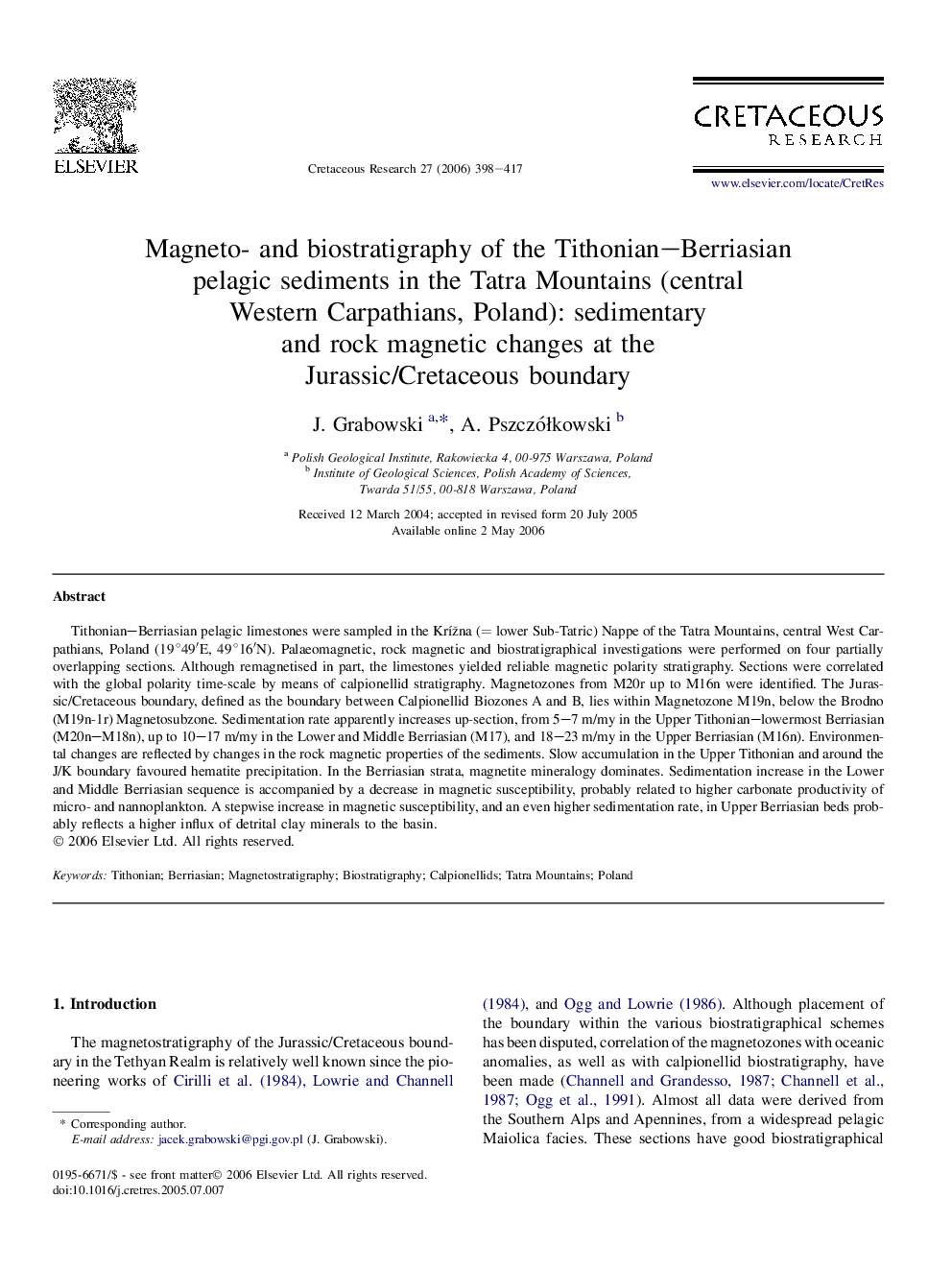| کد مقاله | کد نشریه | سال انتشار | مقاله انگلیسی | نسخه تمام متن |
|---|---|---|---|---|
| 4747458 | 1359912 | 2006 | 20 صفحه PDF | دانلود رایگان |

Tithonian–Berriasian pelagic limestones were sampled in the Krížna (= lower Sub-Tatric) Nappe of the Tatra Mountains, central West Carpathians, Poland (19°49′E, 49°16′N). Palaeomagnetic, rock magnetic and biostratigraphical investigations were performed on four partially overlapping sections. Although remagnetised in part, the limestones yielded reliable magnetic polarity stratigraphy. Sections were correlated with the global polarity time-scale by means of calpionellid stratigraphy. Magnetozones from M20r up to M16n were identified. The Jurassic/Cretaceous boundary, defined as the boundary between Calpionellid Biozones A and B, lies within Magnetozone M19n, below the Brodno (M19n-1r) Magnetosubzone. Sedimentation rate apparently increases up-section, from 5–7 m/my in the Upper Tithonian–lowermost Berriasian (M20n–M18n), up to 10–17 m/my in the Lower and Middle Berriasian (M17), and 18–23 m/my in the Upper Berriasian (M16n). Environmental changes are reflected by changes in the rock magnetic properties of the sediments. Slow accumulation in the Upper Tithonian and around the J/K boundary favoured hematite precipitation. In the Berriasian strata, magnetite mineralogy dominates. Sedimentation increase in the Lower and Middle Berriasian sequence is accompanied by a decrease in magnetic susceptibility, probably related to higher carbonate productivity of micro- and nannoplankton. A stepwise increase in magnetic susceptibility, and an even higher sedimentation rate, in Upper Berriasian beds probably reflects a higher influx of detrital clay minerals to the basin.
Journal: Cretaceous Research - Volume 27, Issue 3, June 2006, Pages 398–417